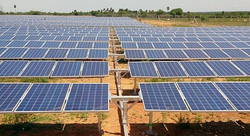South Asian and South East Asian Cities at crossroads: Role in International Climate Change Efforts

Rapid urbanisation brings new and substantial challenges, ranging from governance and citizenship to infrastructure, housing, and the environment.
By Keshav Jha
Rapid urbanisation brings new and substantial challenges, ranging from governance and citizenship to infrastructure, housing, and the environment. More than 54% of the world’s population resides in urban areas, which is expected to increase to 70% by 2050 (UN, 2015). It is important to note that there is significant role of cities in causing climate change and they also increasingly seek ways to play an active role in international climate change efforts.
From the 6th to 17th of November 2017, signatories to the United Nations’ Framework Convention on Climate Change (COP 23) are meeting in Bonn, Germany, to discuss implementation of the Paris Agreement, a global treaty that aims to limit global warming to well below 2 degrees Celsius above pre-industrial levels and to pursue efforts to limit that increase to 1.5o Celsius. COP 23 discussions are ongoing and cities are again at the forefront of proposed climate change mitigations interventions. Accounting for nearly 50% of global GHG Emission, they determine the implementation of the Paris agreement. Propelled by the Global Covenant of Mayors for Climate and Energy (GCoM), the new standard establishes a minimum set of requirements for emission inventories to be reported, focusing on the emission sources and sectors in which local government have most authority such as transportation, buildings, waste and to some extent, energy generation.
Countries have publicly outlined in their respective Nationally Determined Contributions (NDCs) about the post-2020 climate actions under the Paris agreement. The NDCs elaborate countries’ conditional and unconditional commitments to reduce emissions and to adapt to climate change impact. These unconditional voluntary commitments, under the most optimistic assumptions, set the world on a path to 2.6o to 3.1o C of warming, way above the aim to restrict temperature increase to 2o C and 1.5o C if possible. For this reason, not only do countries need to commence efforts to strengthen their NDCs to make them more ambitious by 2020 but also cities of all countries of all sizes need to demonstrate their commitment to help their respective countries meet national contributions to support fulfill the Paris Agreement.
The city-level strategic low emission development action planning serves as a foundation for smart and sustainable urban transformation and could play an instrumental role in cities’ aspiration to contribute in international climate change efforts. Though planning and implementation of LEDS are unique to every city, there are a number of common challenges. For instance, how to build awareness on the benefits of LEDS actions among stakeholders; mainstream climate change into city planning and development processes; strengthen the links between national and subnational government plans on climate change; build capacity to analyse, develop and implement climate policy; establish a mandate for coordinating actions around LEDS and driving their implementation; address resource constraints for developing and implementing LEDS.
Apparently, there are number of early-movers cities and subnational authorities in South and South East Asia, which have undertaken a comprehensive assessment through the climate lens, set sectoral targets and developed an LEDS action plan. For instance, Rajkot, Panaji and Thane in India cumulatively targets to mitigate emission of 1.09 Million tonnes of carbon dioxide equivalent (MtCO2e) by the year 2020. Bogor and Balikpapan in Indonesia targets to mitigate emissions of 2.76 MtCO2e by the year 2030. One of the important developments in all of these cities were the approval of those LEDS Action plan from the City Legislative Council which warrants its integration in to the respective cities development process and allocation of requisite resources and financial commitment. Malacca State Government has set a target to realise Green City vision of under the leadership of YAB Datuk Seri Mohd Ali bin Mohd Rustam, Chief Minister of Melaka.
Although the proposed cumulative low carbon commitment and targets of such cities and sub-national authorities are quite insignificant in national and global perspective however, if countries work towards addressing some of the aforementioned common challenges, it will dramatically change the status-quo of the urban landscape and will assist countries to fulfill their NDC on time and further potentially scale up their commitments. Low Emission development strategies preparation and their implementation exercise is quite similar to any other policy making exercise. However, each cities will have their own tailored approach suited to their national and regional circumstance. Cities can also consult the systemic process of GreenClimateCities (GCC) – builds on more than 25 years of expertise and experience of ICLEI. –
It is worth noting that the City level LEDS action plan itself, once operationalised at the scale, can significantly assist countries in their endeavors to fulfill the existing national determined contributions and further may lead to the development of robust national appropriate mitigations actions and mobilisation of requisite finances.. For the cities to affect and contribute substantially in the global climate change efforts in the long term, it must also revolutionise urban governance while ensuring that safety nets of accountability and transparency are bolstered.


